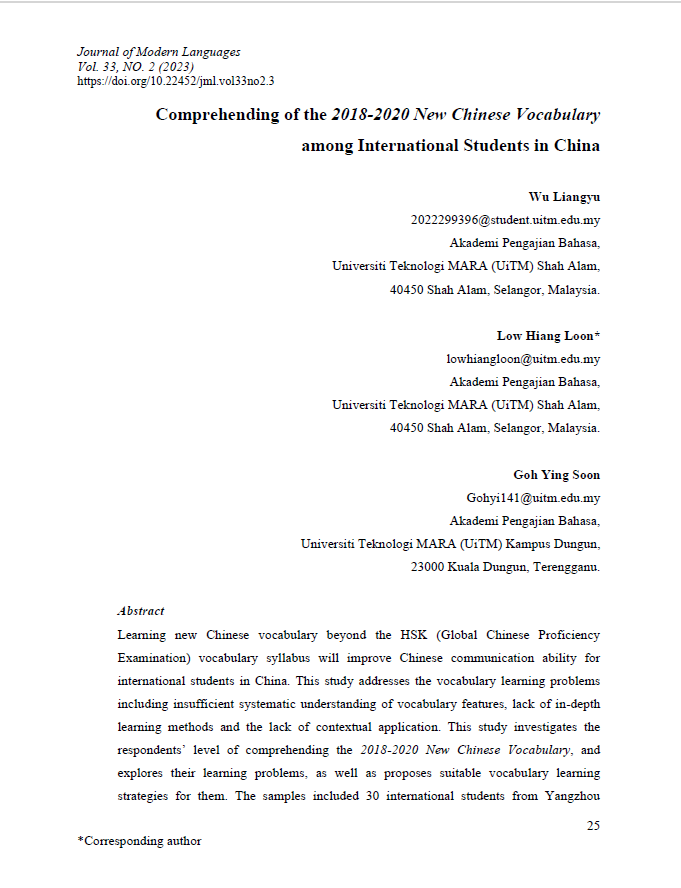Comprehending of the 2018-2020 New Chinese Vocabulary among International Students in China
Main Article Content
Abstract
Learning new Chinese vocabulary beyond the HSK (Global Chinese Proficiency Examination) vocabulary syllabus will improve Chinese communication ability for international students in China. This study addresses the vocabulary learning problems including insufficient systematic understanding of vocabulary features, lack of in-depth learning methods and the lack of contextual application. This study investigates the respondents’ level of comprehending the 2018-2020 New Chinese Vocabulary, and explores their learning problems, as well as proposes suitable vocabulary learning strategies for them. The samples included 30 international students from Yangzhou University, Guangxi Normal University and Bohai University in China. The results from the online questionnaire indicate that the students' comprehension of these new vocabulary has improved in the context-provided assessment. In terms of problems, 90% of the respondents were unable to infer the meaning of new vocabulary based on existing knowledge. Besides, students with better understanding generally use context strategies and coding strategies more than other students. This study puts forward suggestions on the vocabulary learning strategies to help international students learn Chinese vocabulary better.

